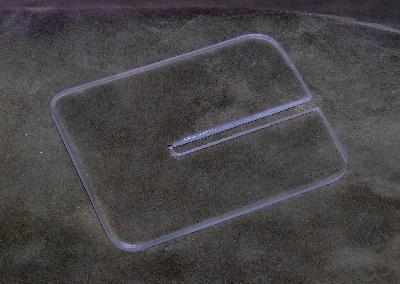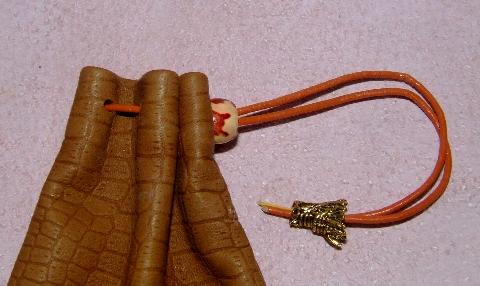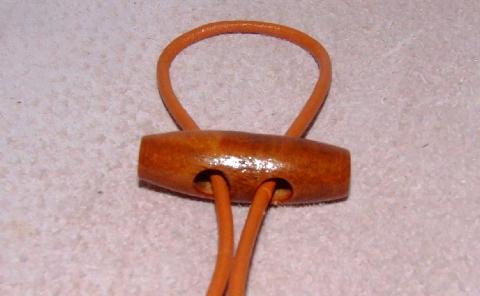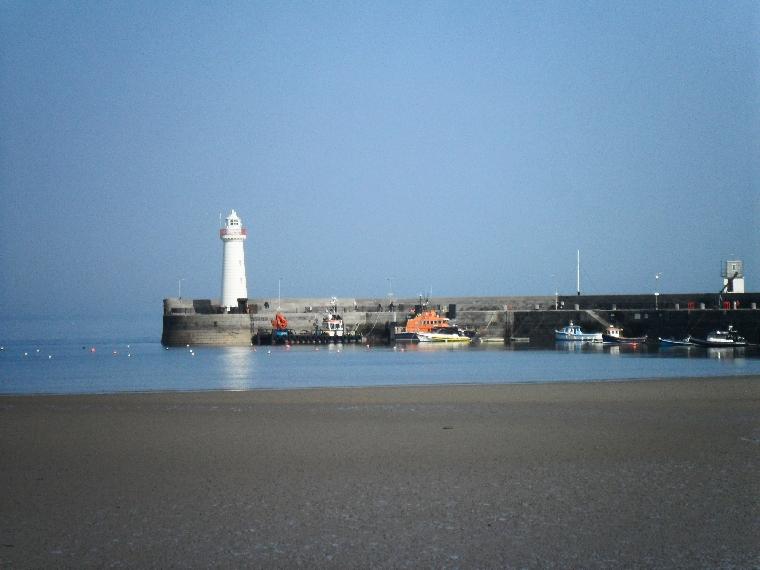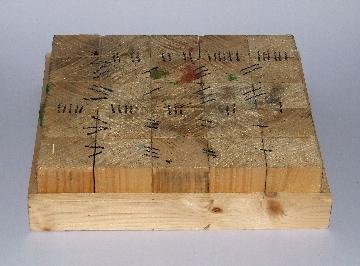-
Posts
5,931 -
Joined
Content Type
Profiles
Forums
Events
Blogs
Gallery
Everything posted by fredk
-
Here is my plastic pull-out thingy. Made from a scrap piece of acrylic, its 3mm thick by 6cm wide and 8cm long, the slot is about 4mm wide and 5cm long. I think it took me about 1/2 hour to make Boring, innit?
-
I just use boxes, and more boxes, and note books All just cut leather pieces go into one big box. Then as each set of items progresses it goes into its own box. At the mo I'm making some coin purses, some coin wallets, some hex trays and other things. Now there is a box for the dyed but not assembled coin purses et cetera. Notes are written as to how many of the item are in the box and what stage they are at, eg '6 coin purses, rivet hole punched, dyed' With the likes of the coin purses which need a split-ring I put the required number [plus a couple extra] in a plastic bag with them so I'm not having to hunt for the rings later When the items are done they get tossed into my 'sales' box For game boards; cut boards are stacked in one area. Boards prepared for covering are stacked in another place and boards with their first leather cover are stacked in yet another [safer] area
- 5 replies
-
- projects
- multiple projects
-
(and 4 more)
Tagged with:
-
If you like chilli dishes you'll like curry. Altho its a hot spice it is different. I hate chilli but I'll eat curry
-
btw, on the odd occasion when I reckoned a thread was too grubby, I pulled the thread out and re-stitched with new clean thread Thread is cheap. You'll spend / waste more time trying to clean a length of thread worth less than 0.1c than its worth. Pull it out and re-stitch and be done with it. Also trying various solutions on the thread to try to clean it may damage the leather or its finish, and that bit is ultimately worth more
-
Yes, a seam through both outsides. Bevel the edges of both the base plug and the inside of the sides. then sew through at an angle. Like doing a dice cup Basketweave Dice Cup by Gerald Poissonnier.pdf see the drawings on this
-
1. draw string bag, open, bead to the right 2. pull/push the bead along the lace and pouch closes There is a more elaborate system of two laces and 4 beads, two on each side, in which you pull two opposing beads to close the purse and you pull the other two opposing beads to open the purse I buy the beads with holes already through them. They are sold for and meant for jewellery making. My choice of bead is on the design of the bead and its size. A drill will soon make the hole the right size Then there are these; two hole toggle buttons; these are large ones, about 30mm across. Will do the same job as the single hole smaller bead but for larger applications
-
I learnt to call that tie a 'shoe-lace' tie and the thingy is a 'toggle' or 'woggle'. As used by some scouts https://en.wikipedia.org/wiki/Woggle You could make your own or use very large buttons or beads For small drawstring bags I use a large wood bead
-
Here's part of the harbour in my town, on a nice spring afternoon last week, at low tide. The orange and blue boat is the local deep-water RNLI Lifeboat If the weather is decent tomorrow I'll take more photos to show youse
-
No, this is the wurst
-
We should start two threads 1. for our food 2. for photos of our places
-
I can' I can't answer you directly but istr that there was a long discussion about this some time ago. But I can't find it yet Try here;
-
I use a rubber/latex based glue which is called Copydex in the UK. You may have something similar there On Amazon Ca; https://www.amazon.ca/Copydex-260920-COPYDEX-ADHESIVE-45981652/dp/B0001OZIFW
-
No, its because we abused the bags. Every year my mother used to buy me a new satchel and new shoes for the new school year, even if I didn't need the new satchel. If the old school satchel was still good it went back to the shop [a main shoe shop] and it was sold on to people who could not afford a new one
-
imo I reckon a rug could be used, more so if it has come from a reputable store If you think upon it, the rug is going to get walked on, and far more abuse than any coat is going to get. No store wants to refund you your money in a weeks time because the rug shed or ripped up so quickly. A few years ago a friend passed on to her son a sheep skin rug which she had bought in the late 1970s, about 42 years previous. The rug was still in good condition although it did need cleaning Last year I checked out some hair-on rugs in Ikea. They all seemed to be top quality. I didn't need one so I didn't buy but I might have gone for one of the sheep skin ones
-
You have to balance what you want to make with what customers' want. I make what I want but I'm also open to making something a customer wants, as long as its in my experience to do it. [One item which comes to mind was a car owner asked for covers for part of his car front seats. An area of the car seats were badly worn. I made the covers and he just glued them in place.] I'm also building up a stock of small items that I hope will make sales I once knew a prominent Ulster artist. She painted 'pet portraits' and the occasional human portrait. She once told me that she really hated doing these paintings. So why do you do them? I asked Her reply, 'because they pay the bills and allow me to paint what I really want to do' If you can, try going on journeys to nowhere on buses and trains and observe people. Go to a town centre and sit with a sandwich and coffee and observe people passing by. I've been using buses and trains, going to town cafes. I have a small sketch book full of ideas of things I've seen, designs of bags, purses and even wallets and so much more that other passengers or people walking by have. Go into fashion stores and look at the 'leather' items~* on sale. These are the things that some people will buy * on this, No.3 son drew my attention to a certain style of back-pack bag in a top fashion store. The bag was available in many colours and there was a sales offer on them. £125 instead of £160. The bag was an exact copy of the school bag we in Ulster used to use 50 years ago. I managed to find a price for those bags, about £2.50 in 1971-ish, or about £80 today, so not terribly expensive in comparrison; https://www.scaramangashop.co.uk/Fashion-and-Furniture-Blog/wp-content/uploads/bag4.jpg When I was involved in historical presentation groups a lot of my sales were to the group members and some to the public, about 70 / 30 % Since I left that and the groups have died away I'm doing mostly things just for family, and giving the odd item to friends. But I'm also building up a small stock of a range of items for when we are allowed to go out and do outside markets et cetera again. I have two 'sales agents' in two countries who both want stock, but at the moment and since March 2020 they can't get to the places they wanted to take my items A few years ago I thought I had nice earner all lined up. A certain shop keeper wanted me to make a range of certain things. He wanted quality as his only other source was from overseas and the quality was abysmal. During negotiations the shop keep disappeared and the shop locked up. It took almost 18 months till I found out where he was - in prison for fraud! His brother took over the shop and doesn't want my items, he's happy selling tat
-
Be warned; Some of these need complete rebuilding and parts filed and machined to make them work
-
You should read 'The Chicago Massacre of 1812'. I got it as e-book
-
This thread and today's date reminds me that I used to have a friend who bred rabbits for fun. He was an ex-submariner and had served during the UK-Argie Falklands War, which started 40 years ago today. Never called PTSD, he used to into his garden and pet and watch his rabbits whenever he was stressed out
-
I got an order from Le Prevo, about 2 weeks ago. Just some dye and some brass loops Stu handled most of the sorting of the order. No problems at all. Everything went just as it always has
-
There are numerous names for this machine. Some are not repeatable in polite company! but its known as a Chinese Patcher. There are few threads on here about this machine https://leatherworker.net/forum/topic/94117-cheap-chinese-sewing-machine-question/ https://leatherworker.net/forum/topic/99199-chinese-shoe-patcher/ https://leatherworker.net/forum/topic/86981-chinese-imported-sewing-machines/page/5/?tab=comments#comment-665876
-
A deviation off the main track I used to live in a certain town. It had a bad problem with pigeons, aka flying rats. The town council called in a pest control company. As usual with small local governments, the time between deciding and doing took some months. Pest control came. Made a report to the council - basically 'What pigeon problem?' They counted only about 20 pigeons round the town. In the earlier months about 100 Brazilian immigrants had arrived, to work in certain local factories. The pigeons were free dinners for them. As were all the fish in the numerous lakes and rivers around the area!
-
I newked that picture off ebay. My acrylic one isn't as nice. I just made a couple of saw cuts in a scrap piece of acrylic I had handy and removed the bit between the cuts to give the slot. The one in the photo is one you can buy out of China for about £3 / $3.50-ish The way I tend to do my hole making, with either type of punch, is to hold the working end, the hole punching end, with my left hand, the side of my hand pressing on the leather and fingers holding the punch tight to the leather. Mallet in my right hand. The plastic thingy is under the side of my left hand, so I slide it forwards beside the punch as I pull the punch out of the leather with my left fingers, rotating my hand at the wrist, I can keep the plastic on the leather pressing down Kinda hard to explain. After doing it a few times it becomes easy and automatic. I can sort of walk the punch along a line quite quickly this way - punch, pull out, slide along using the plastic as a slider, punch, pull out, slide along and so on
-
oh dear, oh dear. I bought two sets of hole punches [different spacing], out of China thru ebay. Cost about £8.50 for a set of 3 of each [2, 4 & 6 hole punches] No problem with them. These are for making holes which take leather away I punch into a block of blocks of wood, end grain on. Sometimes I'll use a bit of scrap leather between my work piece and the blocks My block of blocks; I have a small off-cut of thick clear-ish acrylic plastic with a slot cut into it. I place the slot on each side of the hole punches, whatever the type, and hold the acrylic down hard whilst I pull the punches out




